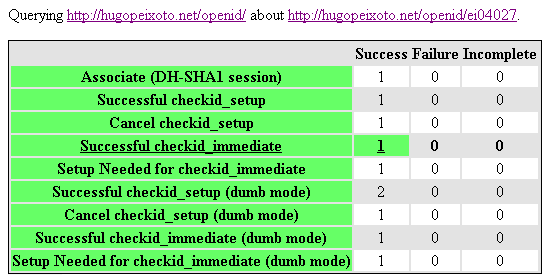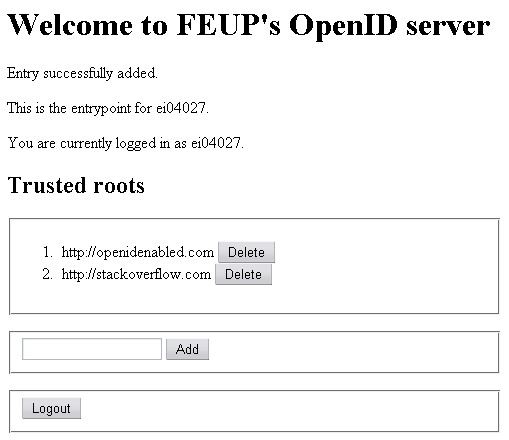The beginning of OpenID at FEUP
Published on June 09, 2009
Early this year, a friend of mine at NIFEUP (our local informatics students’ group) developed an application similar to rapidshare (named feupload, although free and limited to our Faculty members. This application used LDAP server as a means to authenticate the users — you just had to insert your campus credentials, and an account would be automatically created.
This mechanism, although promoting usability, leads to the usual trust issue: you have to give away your credentials to a third party in order to use the service.
Now, although we’re pretty much honest people regarding these kind of details, one can imagine the damage that could’ve been done if we were storing the users’ credentials. Several teachers are using our service. With this in mind, we had to think of an alternative approach.
Enter OpenID:
OpenID is a free and easy way to use a single digital identity across the Internet.
This is exactly what we were looking for. Basically, the website that requires authentication redirects the user to his OpenID page, where he can confirm his identity with his credentials. After being validated, the user is redirected again to the first website, carrying a token that guarantees his identity. This way, there’s no need to enter our credentials in the website requiring authentication.
OpenID also has some extensions (Simple Registration and Attribute Exchange), which allow the identity provider to automatically fill in registration fields, such as email address, full name, country, etc. Of course, this requires the user’s permission. Or at least, it should.
So, me and Pedro Coelho proposed implementing this service so that it can be used with our faculty’s credentials. Obviously, it will be deployed and validated by our IT department so that the users can trust the service.
Yesterday, we completed the first stage — we achieved OpenID 1.1 full compliance:

Now, we need to continue and implement the 2.0 features, along with the SREG/AX extensions. We’ll also need to work on the user interface a bit, so that it doesn’t look like this:

In this case, OpenID can be used not only as a centralized identity, but also as a way for our services to verify if a user belongs to our institution without asking for their passwords. I’m hoping that we have this finished by the end of the semester, so that it can be integrated with feupload and other applications before the next school year.